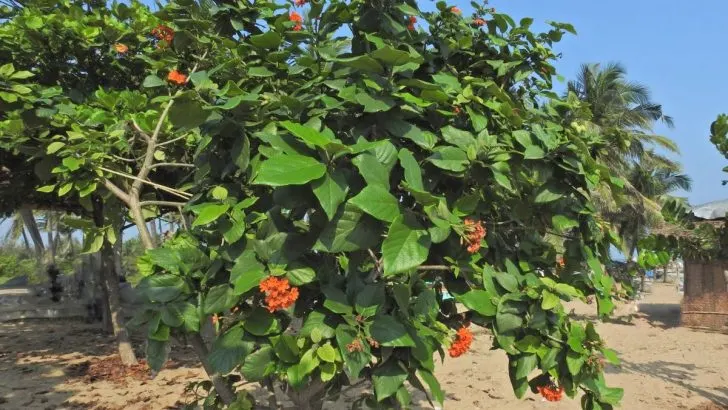Geiger tree is an amazing street tree, or about to become your favorite yard tree. Today we will discuss the growing habits of the Geiger tree and the ultimate care guide for the Geiger tree.
Not so long ago, in the 19th century, John James Audubon found and named this tree the name we know it by today.
Soon enough this tree became a perfect small flowering tree of many gardens in South Florida and many parts of Europe.
Yellow flowering Geiger trees produce fragrant fruits and white or yellow flowers, sometimes bright orange as well. This is exactly what makes this tree so much wanted.
In the rest of the text, find out the detailed care guide for Geiger trees.
Botanic features and appearance of the Geiger tree:
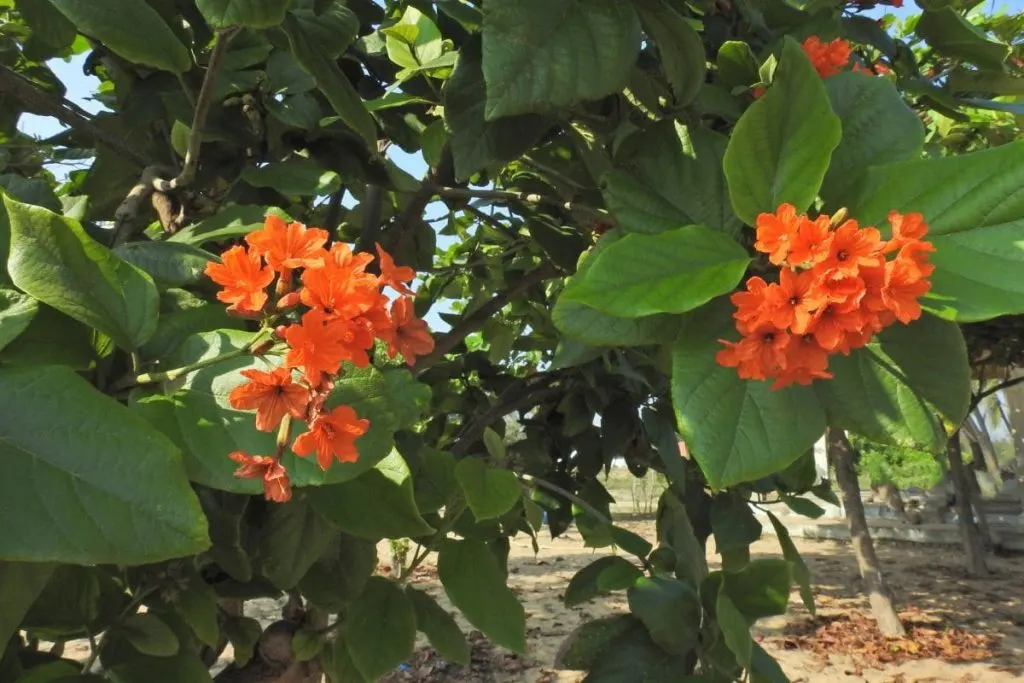
- Native habitat: Asia, Florida
- Family: Boraginaceae
- Botanic name: Cordia sebestena
- Common names: Palo de asta, scarlet Cordia tree, anaconda tree, etc.
- Use: yard trees, street trees, planted on coastal landscapes
- Type of a tree: evergreen tree, single trunk tree
- Toxicity: non-toxic
- Leaf shape and color: relatively small tree, dark gray to dark green, paler green in summer
- Flower shape and color: orange flowers Cordia, yellow Cordia, and white Cordia
- Where to plant: young trees love partial sun location, full sun in spring, and a frost-free area sheltered in winter
About Geiger Tree (Scarlet Cordia Tree)
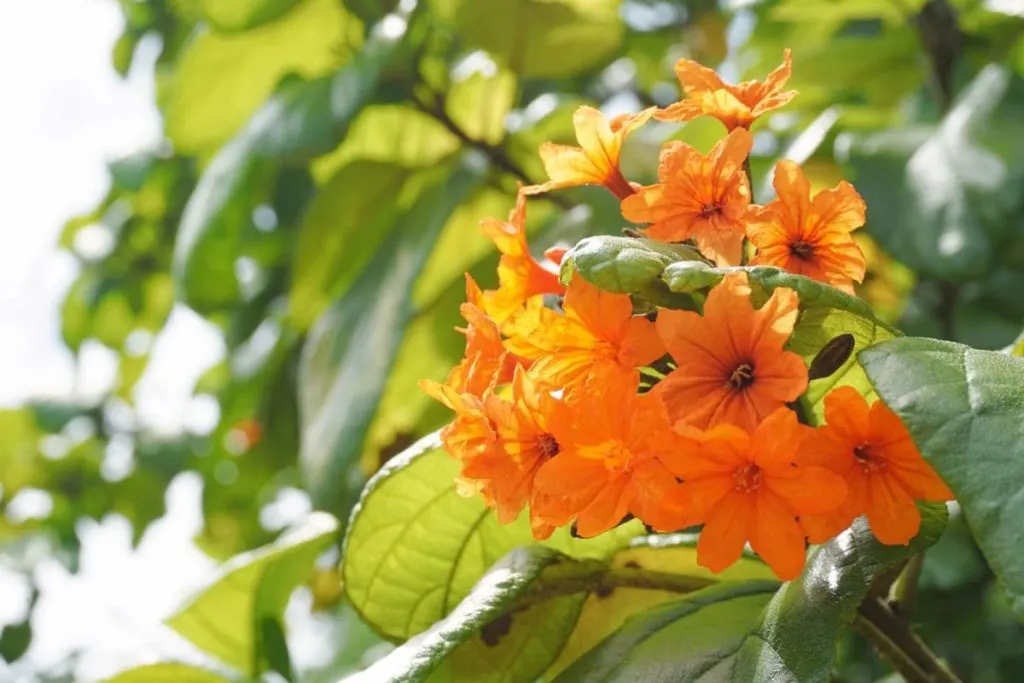
Geiger tree grows in many parts of Europe, South America, and rarely in other parts of the world.
In order to have success when planting this tree, don’t plant them near any other trees. It is found in Audubon house and many tropical gardens around the world.
So only plant it alone in the garden, at least 4 feet from other trees. The Cordia genus features white or yellow flowers depending on the conditions.
They do have similar needs of course. Some believed the tree was named after John Geiger, but the name was actually given by the botanist as we said above.
If you love the features of this tree so far, there are several related trees you would enjoy as well.
Flowering trees yellow and tibouchina trees will look amazing in your yard as well.
Care Guide For Popular Street Tree Geiger Tree
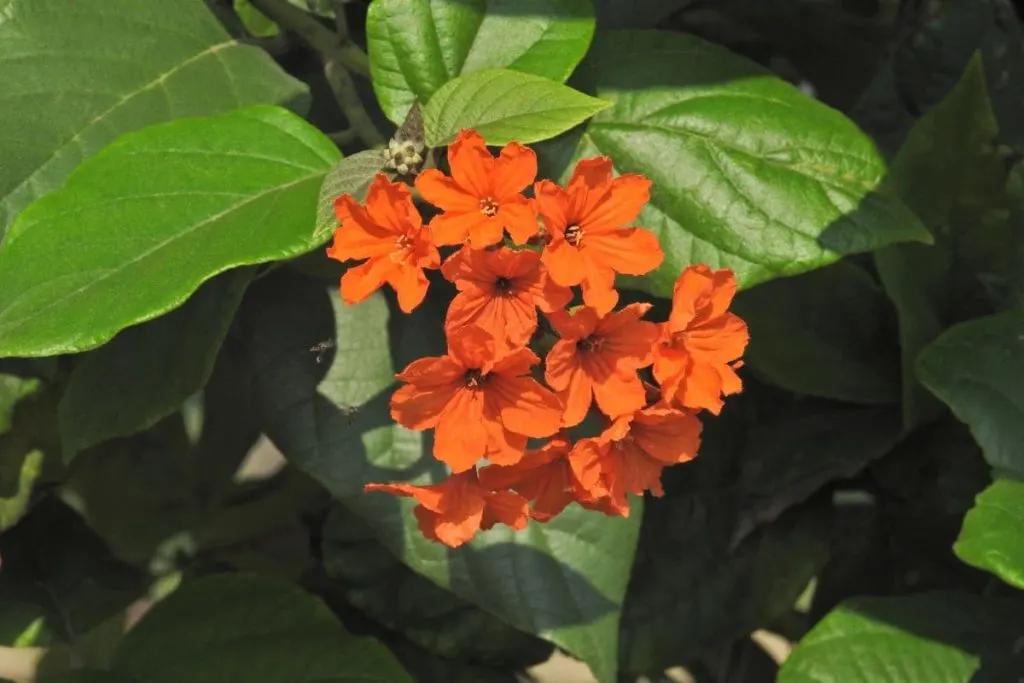
If you don’t want to face a sudden leaf drop, yellowing tips, or root rot: make sure you read the part below in detail. Below you’ll find all the needed information for this flowering tree and its care guide.
This brackish water-tolerant tree has some tricks you need to know before planting it. Saying trim branch ends anytime and applying good quality granular fertilizer isn’t enough, there is more to it.
Find out below what that “more” is and how to grow a perfect yard tree with those skills.
Light Needs
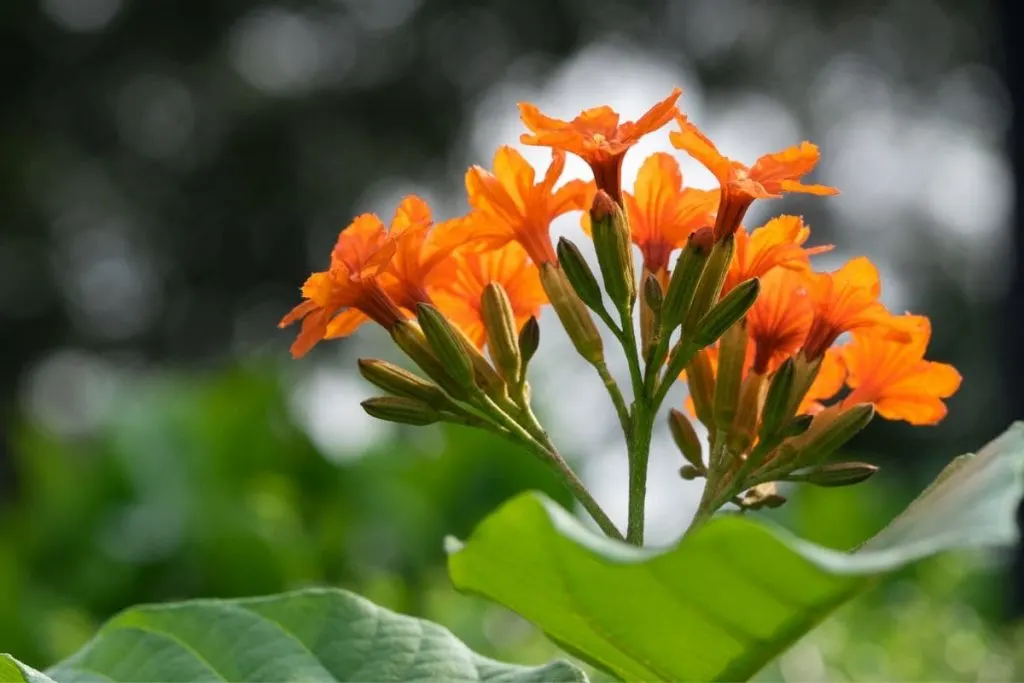
Choosing the perfect location for a Geiger tree is not easy. You will need to balance morning light and partial shade in your perfect location for this tree.
In the shade, it grows more slowly and produces fewer flowers and the leaves are not the ideal green color they should be. It will also flower later than usual in the shade.
The success of flowering, the greenness of the leaves, the health of the overall foliage, and the growth of this tree depend on the sun.
Watering Schedule

Growing a Geiger tree is possible with the help of water if you do it this way:
- Continental climates are quite unfavorable for growing this tree, so you will need more frequent irrigation,
- in climates with Mediterranean climates, every 10 days will be enough.
The Geiger tree has an increased need for water in late spring and summer. Then the growth of saplings and fruits and the setting of buds for the next season are enhanced. Water seedlings or plantations regularly to ensure healthy and safe growth.
Geiger wood is not picky when it comes to the choice of water, so you can use rainwater, tap water, and distilled water.
It is not bothered by salts or minerals in the water because it is tolerant to salt. During the summer, water the tree every 9-10 days. Feel free to reduce watering in winter
Soil Type And Fertilizer
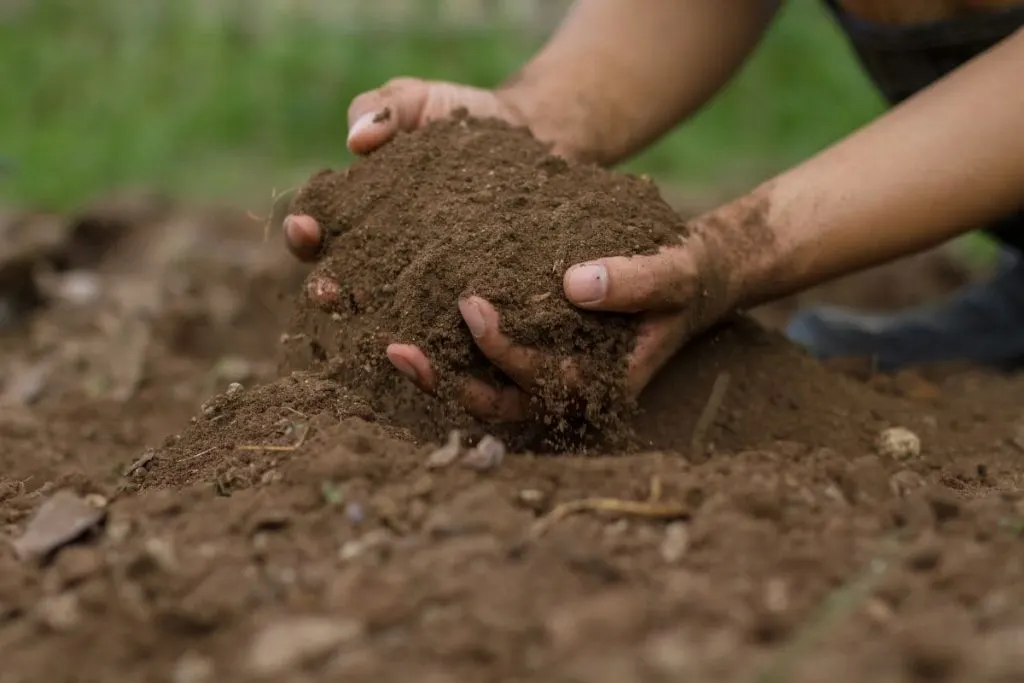
Geiger trees grow in many varieties of soils. They love it if the soil contains salt, so if it doesn’t apply direct salt spray into the soil.
It grows best in sandy soil and slightly alkaline soil. They don’t like very acidic soils, but you can add peat moss or perlite soil to the sand.
Rarely do people add pumice stones. These trees do not like clay or black soil. It will already grow with difficulty in such soil. But all the other things that we have listed, you can use them freely.
When it comes to the perfect fertilizer, this tree likes granular fertilizers. Do not deviate from that fertilizer because it will not have the effect that this fertilizer has. They are not overly fond of organic fertilizers as well as water fertilizers.
You need to fertilize them twice a year. Once in early spring before flowering and once in late summer, before autumn. Do not fertilize anything in the winter!
Temperature And Humidity

The Geiger tree grows best in regions where the average temperature is between 65 and 70 F. It does not like frost and does not tolerate strong winds, and heavy rains well.
The flowers of this tree are very sensitive and you will certainly see this in the flowers of the Geiger tree. Humidity is not overly important for this wood. It can withstand 40% and 70% humidity.
Pruning
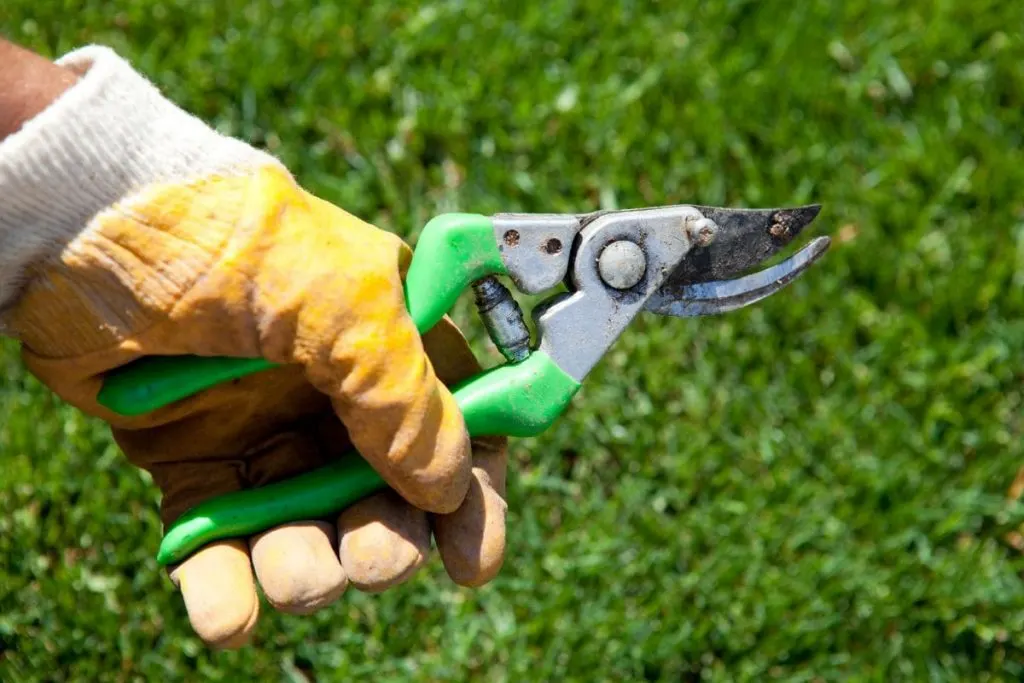
The Geiger tree is mostly formed during the first year of growth. At approximately 40 inches from the ground, twigs should be removed.
They are temporary, but it’s still good to do it. Leave the rest of the borders that you see freely, because the next season’s crop will form on them.
After April, i.e. in May, June and July, isolate the tip of the twig and carry out pruning to remove damaged tips and stimulate the development of new branches. Already for the second year, it is necessary to work again on shaping the Geiger tree.
After winter pruning, cut to form a new branch shape that will be ready for healthy branches and flowering in the spring. You can also remove thicker branches compared to the so-called skeletal, i.e. thinner branches.
Summer is the time for so-called green pruning. When you do this, the tree will produce many good fruits and flowers soon.
This encourages the growth and fruiting of the tree. In the third year, try to orient the branches in such a way that they do not touch each other too much.
Propagation
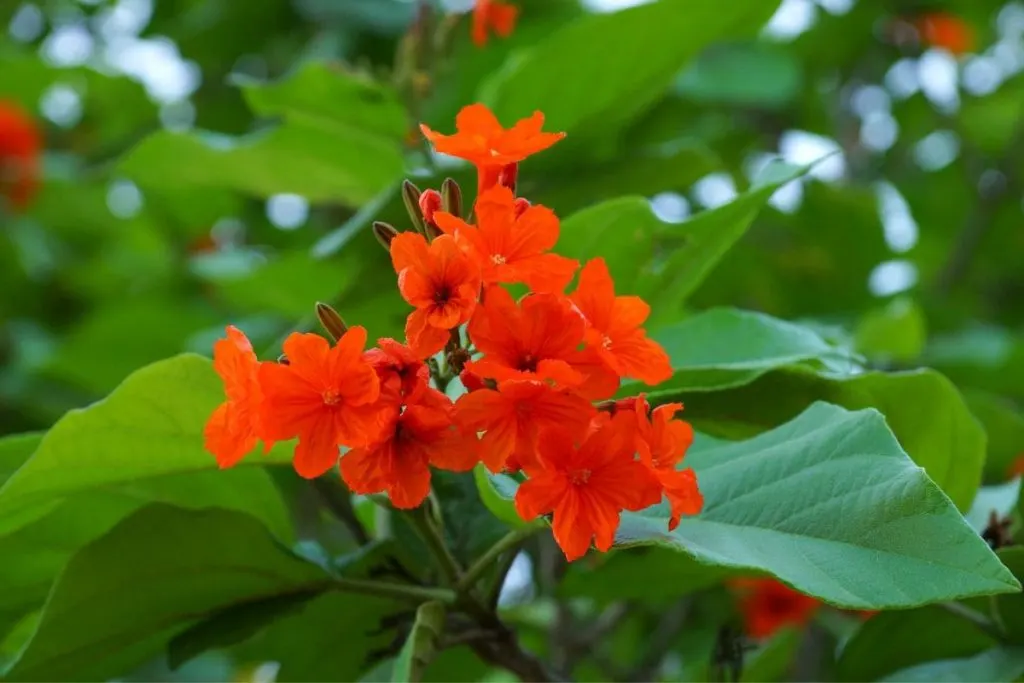
The easiest way to propagate this tree is by cuttings. You can place the cuttings in water or soil.
This type of cutting will be absorbed faster in water. You will notice germination faster. Cut the cuttings at an angle of 45 degrees. You can also grow a Geiger tree using seeds, but this process may take a little longer.
Final Thoughts
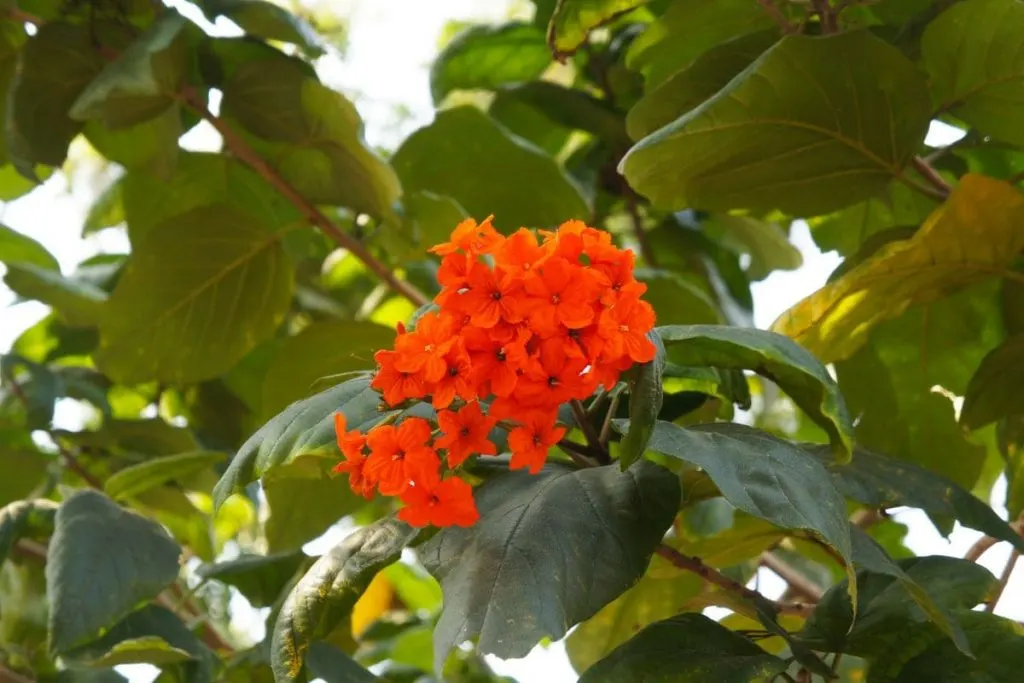
The Geiger tree might be your new favorite tree, right? This is how everyone who meets this tree for the first time feels.
If you are one of those people, at least you have the perfect care guide for this tree. With our advice and your skills, this tree will grow excellently, we are sure of it.
Besides the Geiger tree, you can also check small flowering trees Florida, the jatropha tree, and the sea grape tree.
However, if you’re more a fan of bright colors such as pink and white, check out the magnolia tree Florida too.
These are also very affordable tree species to maintain. You won’t have to prune the tree often or buy messy foliage in your garden. With a little love and a curious green thumb, the trees will grow beautifully.
That would be all for today, see you tomorrow with more similar articles.

